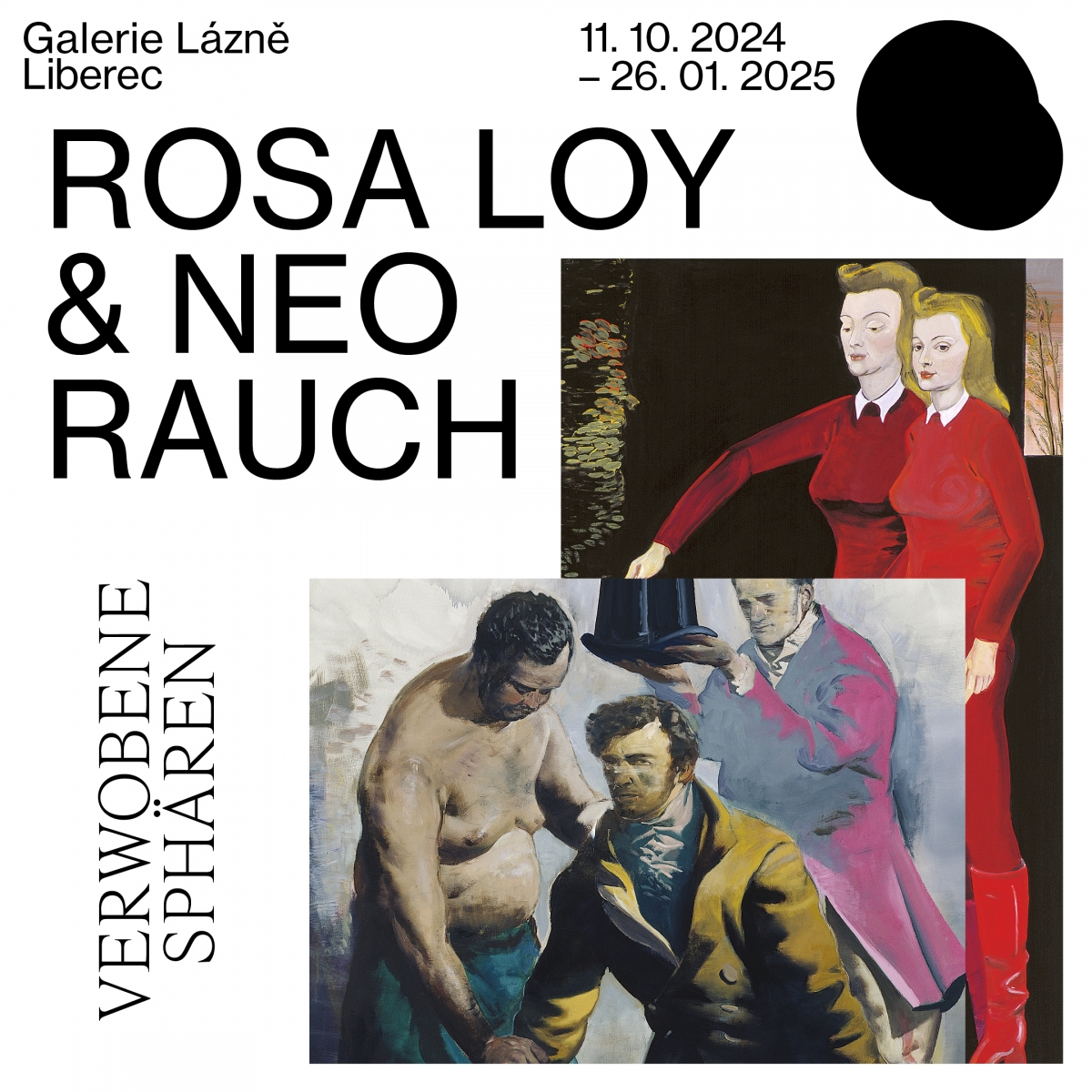German artists and life partners Rosa Loy and Neo Rauch, prominent representatives of the New Leipzig School, are without exaggeration among the most important contemporary European artists. Both studied at the prestigious Hochschule fūr Grafik und Buchkunst in Leipzig, an academy known for its long-term focus on book culture and illustration, as well as for its teaching of figurative narrative painting with an emphasis on perfect mastery of traditional painting and drawing techniques, monumentality of form and narrative of the theme.
Verwobene Sphären presents nearly 100 works by both artists, never before exhibited in the Czech Republic, ranging from large-format canvases to more intimate private paintings, as well as drawings and sketches, accompanied by several spatial realisations that map the period of their unique work from the mid-1990s to the present.
The curators of the exhibition, in collaboration with the artists, have selected mainly pieces for the exhibited collection that the artists keep in their private collections, to which they have purely personal ties, or which specifically document their inner development as painters and which they consider pivotal in their artistic careers. The exhibition is thus not just a simple retrospective, but, in a way, reveals the intimate world of both artists, long-time partners who have always inspired, influenced and complemented each other in their artistic work. This marks their eleventh exhibition together.
The exhibition will be accompanied by a trilingual catalogue featuring complete illustrations of the exhibited works and texts highlighting the main milestones in the careers of both artists.
Rosa Loy (1958) majored in horticulture at the Humboldt University of Berlin in addition to the Leipzig academy of fine arts. And the plants in her works are an independent botanical visual, symbolic and consciously also surreal, not an insignificant fragment of the theme and content of her works which evoke associations with a wide imagination of times and spaces. Her whimsical paintings and graphic works combine elements of realism and subconsciously selected historical, local and traditional elements of fairy tales and fables with bold colour palettes, enigmatic, mysterious scenes and stylised, mostly female characters. Her work also reflects her lively partnership with her husband Neo Rauch, whom she has been married to since 1985.
Women – or rather femininity – is the primary visual and moral imperative and narrative of Rosa Loy’s work. The female figures, whether dressed in stylized monochrome, almost work-like uniforms or by contrast adorned with colourful and rich wardrobes of stylized fairytale creatures, generally appear as twins or deliberately accentuate both their own selves and their alter egos. They suggest the artist's desire for female solidarity in the face of prevailing masculinity and for women who support each other, and at the same time the paintings embody the artist’s mission of self-assurance and self-determination. She is one of the German painters who, from the very beginning, have focused on the mystery of women, the new femininity and the new romanticism, which has direct roots especially in the tradition of Saxon painting. Rosa Loy has the courage to integrate femininity and beauty into her figurative paintings and offers a multi-layered interpretation of her works.
However, it is not only for the appeal of the tonal value that she uses paint containing casein, the main protein component of milk, instead of oil or acrylic paint. Rosa Loy has been fascinated by this unique medium since the beginning of her artistic career – she even produces these delicate, pure paints without additives herself. The graphic nature of this painting technique with fast-drying paints thus lends her paintings a unique painterly power.
Neo Rauch (1960), who attended the studio of Arno Rink and later Bernhard Heisig, gradually broke away from the expressionist means of expression, which reflected the teaching at the Leipzig academy at the time, after his graduation, and over time, despite a brief episode of experimentation with abstract form, created his own, entirely unique and distinctive painting style in the early 1990s, which included elements of advertising graphics, comics and pop art with a characteristic linear perspective, complemented by structural grids of fine lines formed by refracted colour shades, and which was in marked contrast to the trends of abstraction, conceptualism and postmodernism at the time. It is as though these works reflect the atmosphere of post-communist East German society, capturing both the positives and negatives of the era. Over time, the form of Rauch's paintings shifted towards greater plasticity of colours, brighter tones, modelling of the narrative by means of strong shading, a deeper three-point perspective and a more distinct narrative context with surrealist overtones. The magical construction of the narrative, achieved through the varying scales of the depicted figures, becomes a distinctive element, with each part of the painting being elaborated to the smallest detail and composed with an ease that draws inspiration from the Baroque masters and the greats of German Romanticism.
Rauch's large-scale compositions draw the viewer into an incredible world of magical images full of various archetypes referencing seemingly unrelated stories, which the painter retells in a distinctive language of expressive imagination, drawing on his deep knowledge of not only German history and mythology. He sets these fantastical surrealist stories in the notorious post-industrial landscape of the Harz Mountains, where he grew up and which has become a constant source of inspiration that forms the characteristic framework of most of his works.
While Neo Rauch's work was presented in the Czech Republic in 2007 at the Rudolfinum, this marks the first time that Czech viewers can see the works of Rosa Loy.
The exhibition is held under the auspices of the Minister of Culture of the Czech Republic, the Prime Minister of the Free State of Saxony and the Governor of the Liberec Region.

















